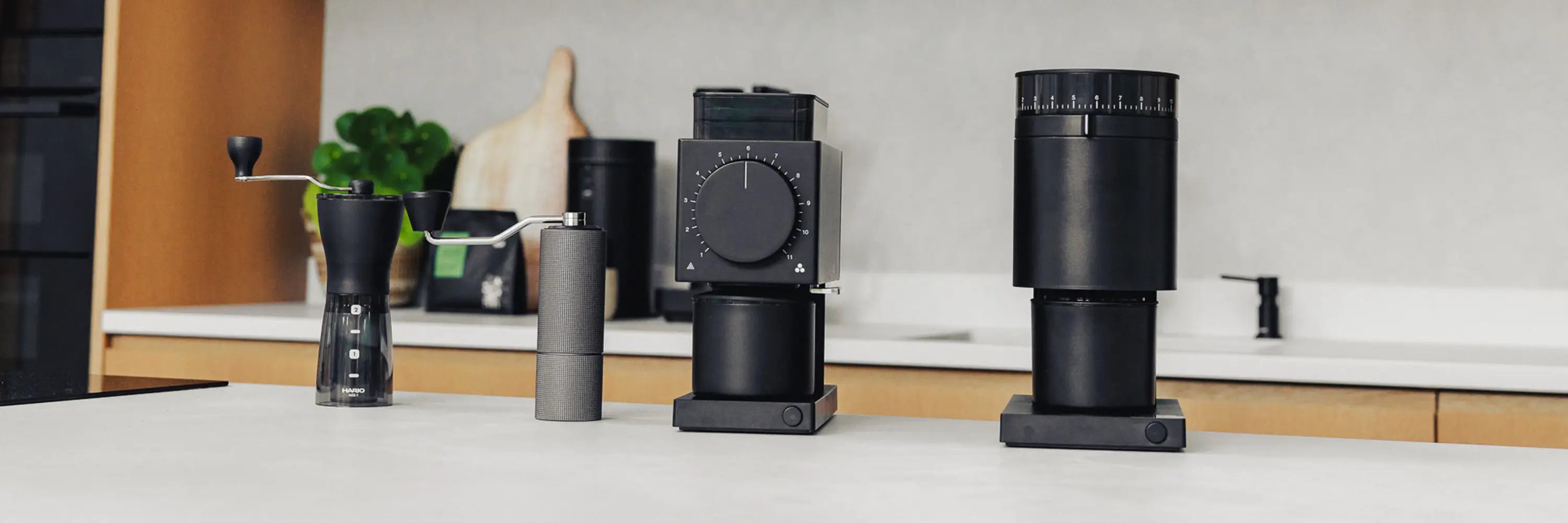
How to Grind Coffee at Home
Inside this article on how to grind coffee at home, we cover all bases to ensure you get the best tasting brew possible for your filter or espresso drinks. There’sa whole range of complicated grind terminology out there, which is why we’ve kept things simple, with three ground options to choose from when you buy online with us. Here, we’ll discuss all things grind–from size, to method, and the benefits of grinding your coffee at home.
What is Coffee Grinding?
Coffee grinding is the process of breaking down whole coffee beans into smaller particles to facilitate the extraction of flavours, oils, and caffeine during the brewing process. We grind coffee to expose more of the coffee bean to extract more flavour for the bean, with a wider surface area to expose the flavour and aromas from the bean.
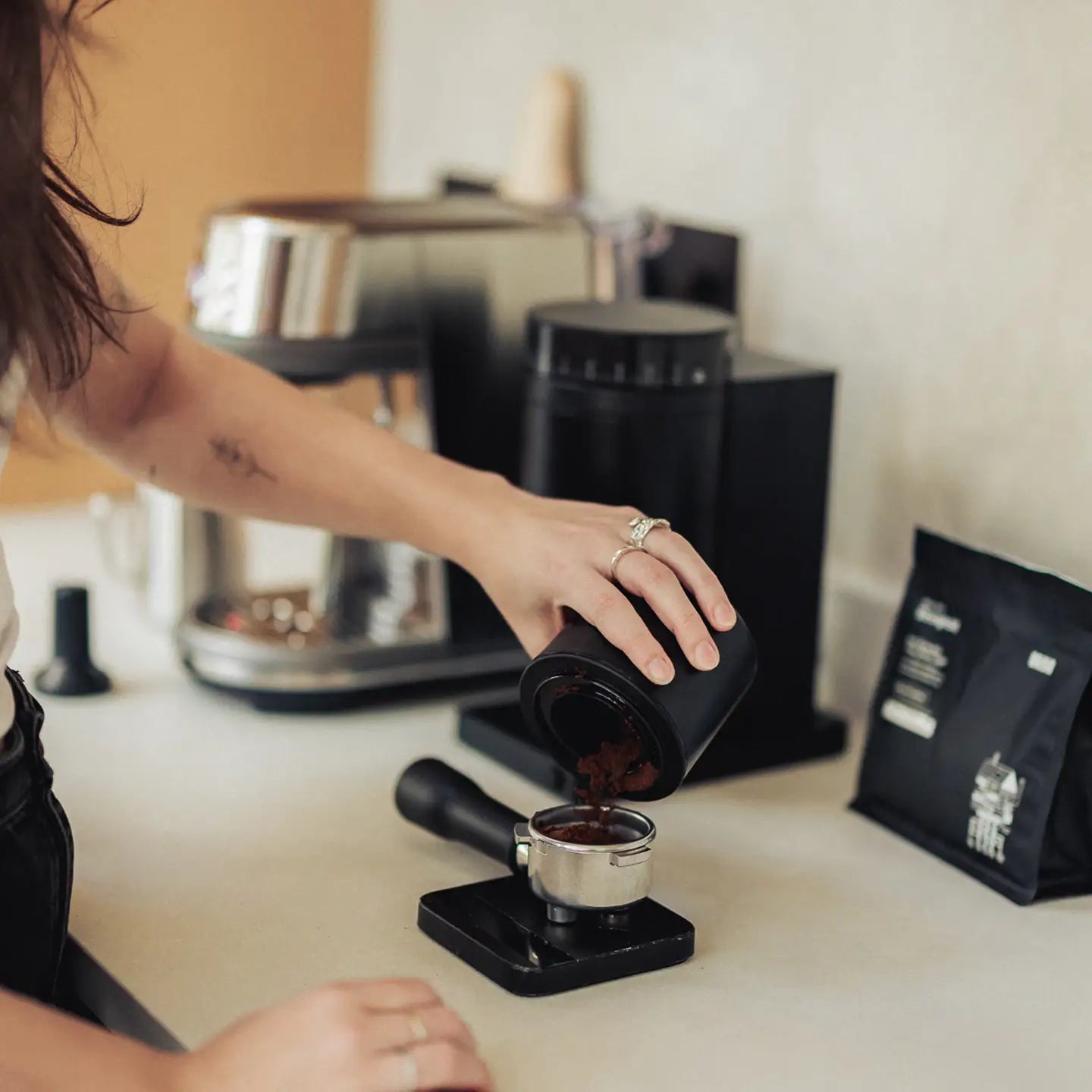
Grinding coffee: Techniques
When’s the best time to grind coffee?
Ideally, the best time to grind coffee is right before brewing. When coffee beans are ground, the flavours, aromas and oils are released—which is why freshly ground coffee smells incredible. Grinding as close aspossible to your brewing time preserves these aromatics that greatly enhance the strength of flavour in your brew.
How important is it to grind fresh coffee?
Ground coffee begins to lose its depth of flavour right after grinding, even when using the highest quality beans. Using freshly ground coffee when you enjoy coffee at home means you enjoy the maximum potential flavour from the coffee.
It’s not just about the freshness, though. Grinding your coffee at home keeps your brew options open: you might favour an espresso in the morning, and a pour-over in the afternoon. Grinding your own beans puts you in control of your brew choice.
Why should you use freshly ground coffee?
When you grind coffee beans, it exposes a greater surface area of the bean to oxygen. The more surface area that is exposed, the greater the speed of oxidation (the same natural process that occurs in all fresh produce). Over time, oxidation of coffee results in a loss of flavour, quality and aroma, which is why we recommend storing coffee in an airtight container.
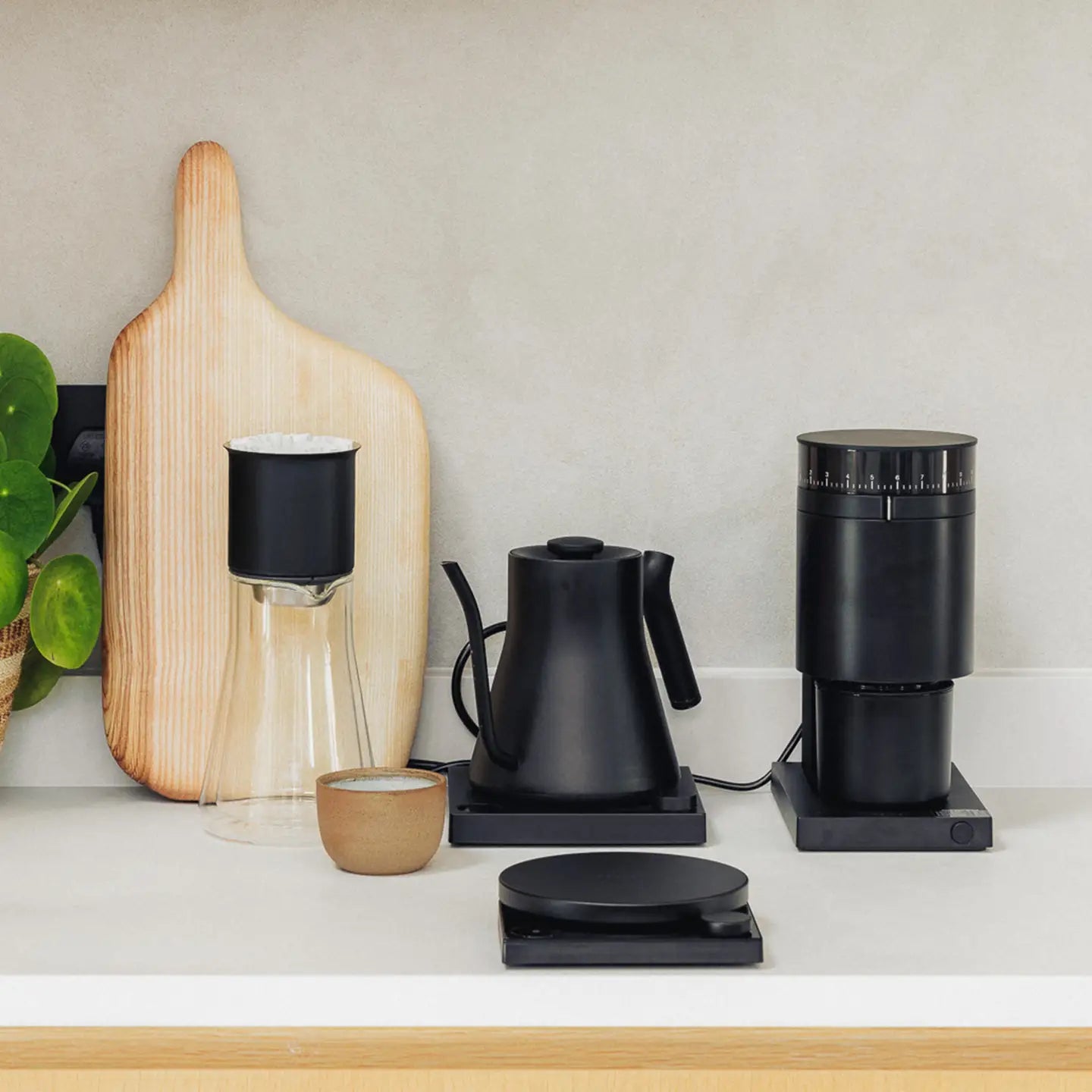
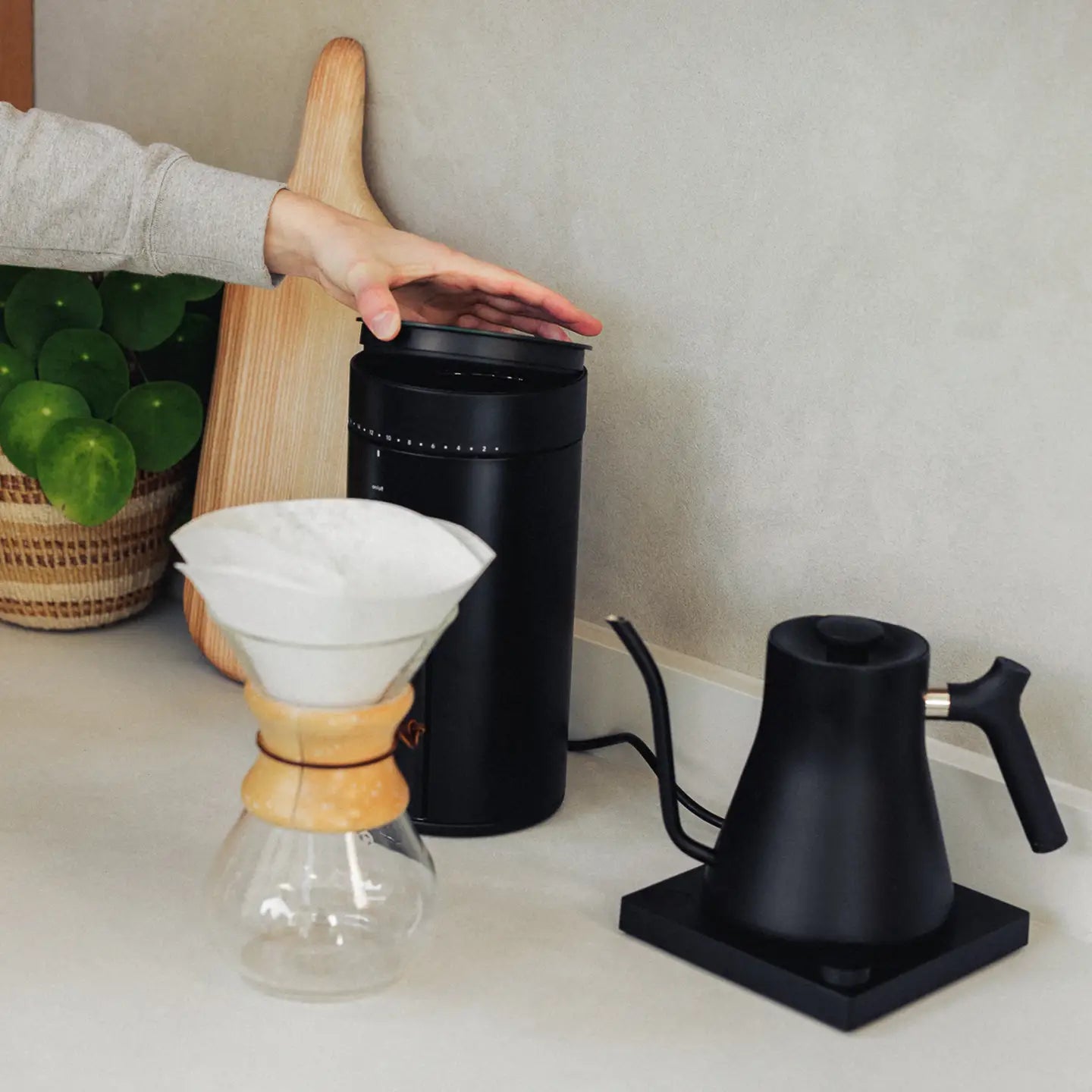
Grinding Coffee: Grind Sizes
Why does grind size matter?
Choosing the right grind size for your brewing method is essential for optimal brewing. The quality of the grind, and particularly the size, will significantly affect the taste of the final cup, and depending on how you’re brewing, you’ll require a particular grind size to avoid over or underextraction. Grind uniformity is another important factor—the more uniform the granules are, the more balanced your coffee will taste.
Coffee grind consistency, explained
Coffee grind size can range from an incredibly fine powder to a coarse, caster sugar like consistency. The grind size and overall surface area of the coffee grounds impact how the water interacts with the coffee. Getting the grind right for your preferred coffee brewing method is key for optimal extraction.
How does over-extraction occur?
If whole beans are ground too finely, it opens up the possibility for over-extraction, resulting in a bitter-tasting coffee. This happens because the finely ground coffee particles pack closely together, compacting and making it difficult for water to run through. When coffee is slowly extracted, the water has longer to interact with the coffee, bringing forward the more bitter elements of the coffee profile.
How does under-extraction occur?
Under-extraction can occur when the coffee is ground too coarsely. The larger coffee particles allow water to run through the grinds too quickly. This means the water doesn’t have enough time to interact with the coffee and extract the desired flavours. This under-extraction can result in a sour-tasting coffee.
Coffee Grind Sizes
As we’ve discussed, different coffee brewing methods require different grind sizes for optimal results. Generally speaking, the longer you are brewing the coffee, the coarser the grind needs to be, and vice versa.
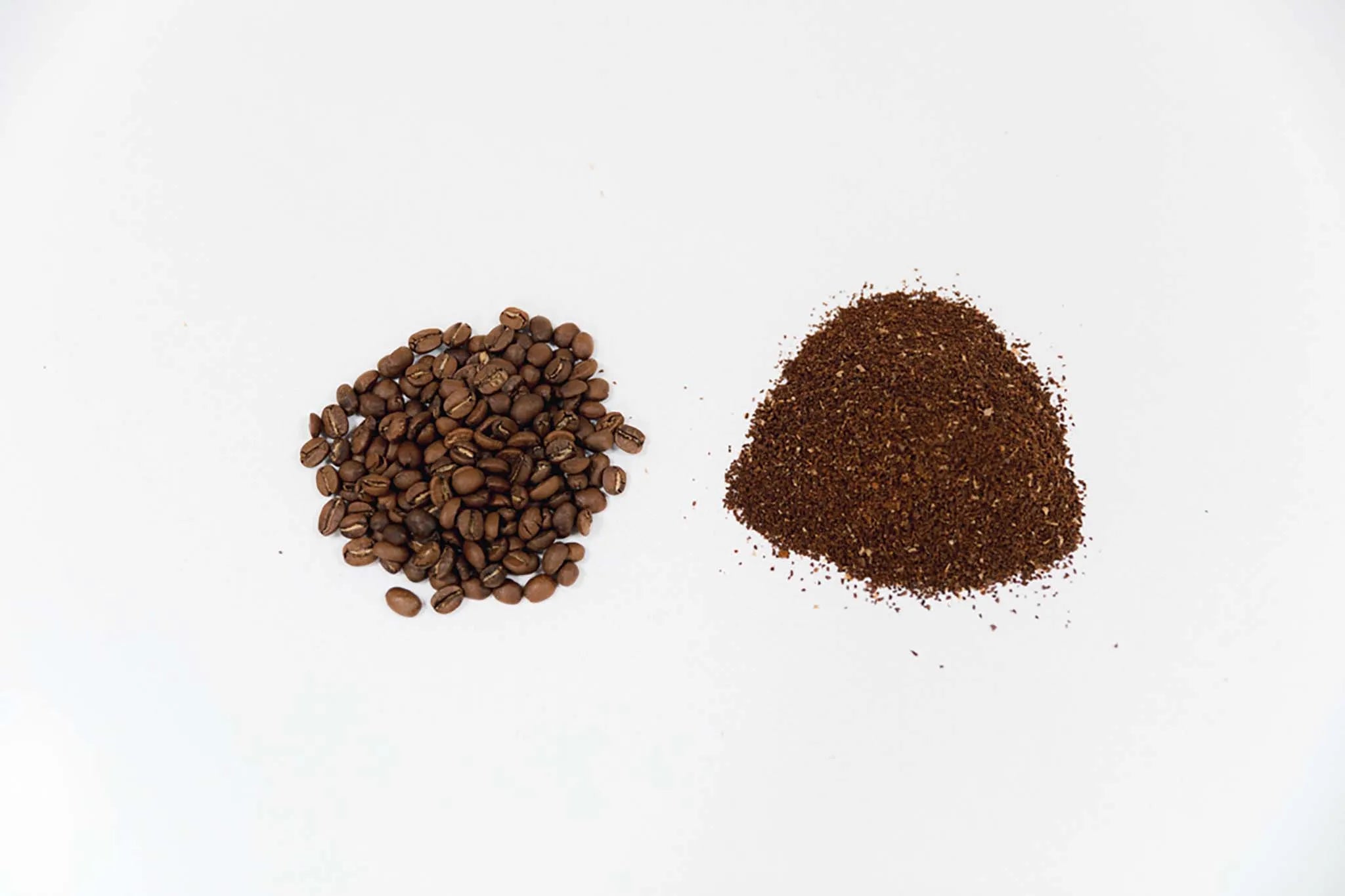
Fine, Medium, Course
Fine
Best suited for: Espresso Machine, Moka Pot
Finely ground coffee is best suited for brewing methods that require full flavour extraction in a short time. Most commonly used for brewing espresso, the fine consistency of the coffee, and therefore large surface area,allow the highly-pressurised hot water to extract a full profile of flavour from the coffee in just a short time—around 30 seconds.
Medium
Best suited for: Pour Over, AeroPress
A medium grind size is best suited for most drip coffee and pour over brewing methods. The beauty of an AeroPress is its versatility, which is why it’s such a popular brewing method for professionals and home coffee drinkers alike. We recommend using a medium grind for a 2-3 minute AeroPress filter-style brew, but there’s room for exploration here, and the opportunity to find a recipe that you love.
Coarse
Best suited for: Pour Over (V60, Kalita Wave) / Cafetière (French Press) / Drip Filter
These methods all have slower brew times, with cafetières on the longer end of the brew time and extraction spectrum. The coffee grinds sit idle for most of this brewing process, only meeting water resistance with the end plunge. If you’re brewing with any one of these methods, then our coarse grind will ensure a delicious pour.
How coffee grind size affects flavour
Coffee grind size is important because each different grind setting alters the overall surface area of the grounds, which greatly impacts the overall taste, flavour and desired consistency. By understanding coffee grind size and the best ways to grind coffee, you can make sure you’re using the best grind setting to make a delicious coffee every time.

Types of coffee grinder
What types of coffee grinders are there? Explore our tips for choosing the best grinder for your needs.
Blade grinders
Blade grinders use metal blades that rotate in a propeller motion, cutting the beans as they turn. They’re simple to use and the mechanics are easy to understand, adjusting your grind time depending on the size you need: grind longer for a finer grind, and less time for a coarser grind. Blade grinders are often less expensive than burr grinders, but they can be less precise, which can mean an inconsistent grind result. They’re also not for the weak of arm if you’re looking to grind fine using a manual grinder, often.
Burr grinders
Burr grinders work by crushing coffee beans between spinning ‘plates’ or ‘rings’. There are two main types of burr grinders: conical burr grinders and flat burr grinders. Conical burr grinders produce a coffee grind known as a ‘bimodal grind distribution’,whereas flat burr grinders produce a different consistency of coffee grind, known as ‘unimodal distribution.’ Flat burr grinders are primarily used for espresso. Burr grinders offer a range of grind size settings, which alter the distance between the burrs. While these grinders can be more expensive, they’re often favoured for their greater grind consistency and control.
Manual coffee grinders
Hand grinders, or manual grinders, are manually operated grinders that use a small chamber to grind the coffee with burrs that are operated by a rotating handle. A good option for single brews, manual grinders are good if you have more time on your hands. Manual coffee grinders are also lightweight and portable, making them perfect for travel, camping, or making coffee on the go. Perfect for beginners, as you can grind coffee at home without having to invest in more expensive equipment such as an electric grinder or a coffee machine with a built-in grinder, where you also have to consider noise and counter space.
Electric coffee grinders
In contrast, electric grinders use an electric motor with a fast RPM, which grinds the coffee beans at a high speed for a convenient, consistent grind. Electric grinders are generally noisier than manual coffee grinders, as the motor requires a considerable amount of force to grind the coffee quickly. However, they’re popular thanks to their speed, consistency and scope, as you can personalise the grind settings to your exact requirements at the touch of a button.
For our full breakdown of grinder of recommendations, check out our coffee grinder buyer’s guide.

Electric vs hand grinder - Which is best?
Hand grinders are usually lighter on the budget, and they’re handy for when you’re short on counter space. As well as being easy to clean and put away, they’re portable and compact, making them ideal for travel. They’re quieter than an electric grinder, and there’s something to be said about adding to the ritual of brewing your coffee, by grinding the beans yourself.
Electric grinders have a higher price point than hand grinders, but offer far more scope in terms of your coffee grind settings and the overall quality of your brew. While electric grinders are more of an investment, they are quick, convenient, and clever. Dedicated coffee grinding machines operate for a single dose, enabling you to grind the exact amount of coffee beans you need for each brew.
Origin recommends: The best coffee grinders to buy
Coffee grinding: FAQs
What should I look for in an electric grinder?
We suggest choosing a brand with a high build quality, consider blade versus burr mechanics and the cleaning and maintenance involved with each, and the amount of counter space you have to spare.
How much should I spend on a coffee grinder?
This entirely depends on your budget and brewing needs. There are manual grinders at a lower price point that deliver the same quality of grind as more expensive electric ones, so consider your preferences—more expensive doesn’t always mean better.
Is it important to measure out your coffee beans?
Yes. Refer to a brew guide for your specific brewing method to see how much coffee is required for the recipe.
How long does ground coffee stay fresh?
As coffee starts to lose its volatile compounds 15 minutes after grinding, it’s best to use your coffee as soon as possible after grinding. If kept in a resealable flexible bag with a one-way valve, and in a cool, dry place out of direct sunlight, the coffee will maintaina good level of flavour for around 2 weeks.




